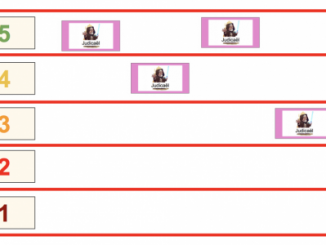
Retrospective
The retrospective is the Scrum meeting that closes the current Sprint just after the Sprint Review. I advise you to do it in a format of one hour so that it is neither too long nor too short.
This meeting is animated by the Scrum Master. The entire team including the Product Owner must be present.
This meeting aims to work on two main axes:
- continuous improvement
- the health of the team.

Progress of the retrospective
The Scrum Master arrives at the retrospective with small fun workshops to achieve specific goals:
- identify areas of improvement
- make sure of the state of motivation of the team
- determine consistency among team members
The Scrum Master will ensure that each retrospective is different so that it never becomes monotonous. He will animate it with a lot of good humor.
As soon as a team finds this meeting boring and uninteresting, it becomes a mere moment to spend what makes it unconvincing. It is imperative to avoid this impression of monotony.
Make continuous improvement with the retrospective
To find axis of improvement, the Scrum Master will offer fun workshops like speedboat retrospective.
Article : Speedboat retrospective
When axis of improvement are defined, the Scrum Master will have to follow their implementation. This will prevent them from falling into oblivion.
Define improvement ambassadors
He can also define an ambassador for each axis of improvement within the team; this will empower a person who feels more compelled to live up to their commitment. He will go to see the ambassadors of each axis of improvement from time to time in the course of the next Sprint to know if the subject is moving forward and if he can help them.
The scrum master will seek to get the team to become 100% autonomous on its continuous improvement.
In retrospect, do not always look for ways to improve
It is strongly advised not to repeat the same exercise on two simultaneous sprints; it is not always possible to apply all axis of improvement in a single sprint. The Scrum Master will only have to start at the beginning of the retrospective to remember in a few words the progress on these subjects; it’s very important that the team don’t have the impression that these topics have been forgotten.
The Scrum Master will analyze the need
He can after an analysis of possible blockages that he has seen, propose adaptations of sprint; this will help the team improve their daily life. It may also submit axis of improvement.
If sprint is adapted, he will supervise that the adaptations respect the other two pillars of the Scrum: transparency and inspection.
Really explain with realism the implementation of improvement axes
The goal of these sessions is not to improve everything in 5 minutes. For the team, it’s very important to understand that if some axis of improvement can be quickly implemented, this is not the case for all axis of improvement.
While some areas are intended to improve Scrum, it is advisable to have separate workshops to discuss these improvements. These improvements have organizational impacts so do not make choices too hastily.
Do not hesitate to take several sprints on the axis of improvement that seem complex to implement. It’s better to be realistic than to give ourselves too short deadlines that the team will not be able to respect to implement these axis of improvement.
I advice you to do workshops separately to treat the very complex cases of axis of improvement.
Problems to avoid
As I said above, you have to be careful because the retrospective can cause a lot of problems and become useless in the eyes of the team.
Here are the tips I give on this topic:
- Do not accumulate axis of improvement that are never put in place
- Always appoint an ambassador to each of the axis of improvement in order to make a member of the team accountable for monitoring a serious subject.
- The Scrum Master must keep track of the progress of these improvements outside the retrospectives
- take 5 minutes at the beginning of the retrospective to make an inventory of the progress of the last axis of improvement.
- We must accept to take time on certain axis of improvement; the time taken at this time will be beneficial in the medium term.
Implementing improvements will be a part of the team’s motivation.
The Kaizen philosophy
What’s the Kaizen philosophy? Each working rule needs to be improved by focusing on the cause of the problem in order to obtain axis for improvement; we will have not to make a sudden change but we will have to improve things as and when.
I will do an article in the future to explain you in detail what is the Kaizen philosophy.
Other types of retrospectives
As I said, do not use the retrospective only for the purpose of continuous improvement; you risk disappointing teams.
This essential meeting for the Scrum Master can also help determine the health of his team. This will enable him to define future axes of work and possible individual coaching needs.
Conclusion art of retrospective
There are many retrospective workshops; I will propose you regularly some retrospective on this blog. I hope you have understood the importance of the retrospective and the gains that it can make when we do it very well.
It’s important to always change the format of it; it don’t feel monotonous in the eyes of the team. In general, the Scrum Master must spend time to find original workshops inspired by the work already done by other Scrum Masters or his own imagination.
Some Scrum Master even bring the team into another environment to give it a sensation of breaking compared to the daily life: garden next door, cafeteria …
Feel free to share retrospective formats that are not shown here. What is your favorite retrospective?




2 Trackbacks / Pingbacks